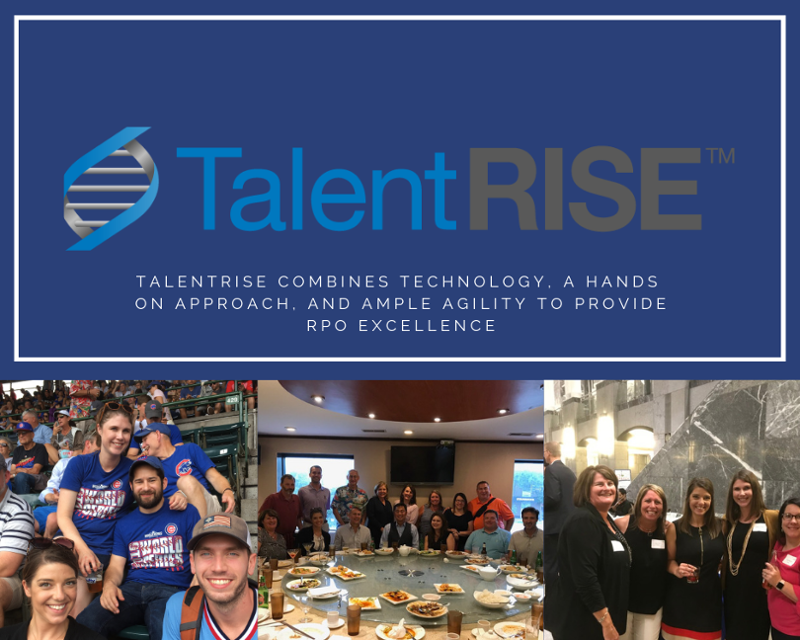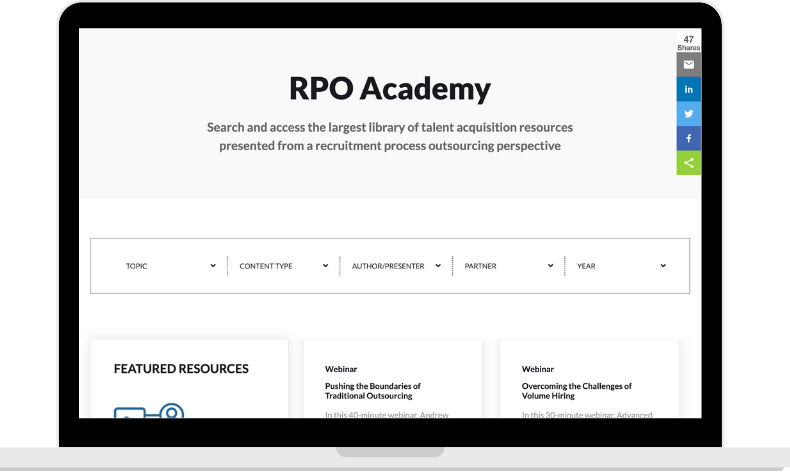
How can recruiting businesses grow revenue despite frozen professional hiring across most industries? Terry Terhark, CEO and founder of NXTThing RPO, reported his RPO business was up 50 percent year-to-date, driven entirely by frontline hiring contracts. Frontline roles involve working directly with customers or helping run critical daily tasks, such as cashiering, delivery driving, nursing, or store work. Recruiting companies today face a strategic contradiction: frontline recruitment volume surged while professional hiring stagnated, creating what industry veteran Terhark identifies as “the most complex market dynamic in four decades.”
At the 2025 RPOA Annual Conference, the leading industry conference for recruitment process outsourcing (RPO) leaders and their industry partners, Terhark shared how RPO businesses can achieve profitability by balancing human expertise with AI consulting. His 40 years of maintaining consistent operating income through the 2008 financial crisis demonstrate proven approaches for sustaining margins during demand fluctuations. This article provides practical advice from RPO veteran Terry Terhark to RPO business leaders on managing and growing their business during a down market.
Major takeaways for RPO market leaders:
- Revenue concentration risk: Frontline hiring accounts for the majority of current RPO industry growth, while professional recruitment remains stagnant, underscoring the need for immediate capability development in high-volume delivery models.
- AI consulting revenue opportunity: RPO companies can monetize their technology expertise by advising clients on build-versus-buy decisions for recruitment platforms, positioning themselves as strategic advisors in relationships worth $5 million to $10 million annually.
- Margin protection through flexibility: Contract terms that eliminate minimums during economic downturns convert short-term concessions into partnerships, while virtual operations create variable cost structures, preserving operational income targets.
Why Frontline Hiring Drives Current RPO Business Growth
U.S. unemployment reached 3.7 percent in Q3 2025 according to Bureau of Labor Statistics data, yet job gains declined since Q4 2022. Job postings remain 12 percent above 2019 levels, according to Indeed's 2025 analysis. This bifurcation creates opportunities for high-volume recruitment to drive growth while professional hiring models stagnate.
Terhark reported that frontline contracts generated 100 percent of his organization's 50 percent revenue increase in 2025. Providers focused exclusively on professional recruitment saw revenue declines, while diversified organizations achieved double-digit growth, demonstrating how service portfolio diversification protects revenue during economic volatility.
Should RPO Companies Build or Buy Recruitment Technology?
Technology investment decisions shape competitive positioning as job board licensing fees increased in 2025. Terhark emphasized that proprietary platforms create differentiation, allowing independent monetization. Both RPO businesses, RightThing and NXTThing RPO, eventually owned their applicant tracking systems, transforming technology from a cost center into a strategic asset, enhancing valuation multiples.
However, building technology requires substantial upfront investment and ongoing development resources that smaller providers may lack. Purchasing commercial solutions enables faster deployment and lower initial capital requirements, though providers sacrifice differentiation and face recurring licensing costs that compress margins. The build-versus-buy decision depends on the provider's scale, technical capabilities and strategic positioning goals.
Terhark’s Take on AI’s True Value for RPO Operations
Despite widespread claims, Terhark reported AI has not yet transformed RPO operational efficiency. He attended the 2025 HR Tech conference, where hundreds of exhibitors displayed AI prominently across their booths. Terhark observed that a vendor advertising "We're not AI" with a big flashing light would have attracted crowds through differentiation alone, highlighting the disconnect between marketing hype and operational reality.
While chatbots and AI-enhanced sourcing improved specific workflows, comprehensive AI platforms tailored for RPO remain under development. Providers positioning as AI implementation advisors generate consulting revenue while managing client expectations around realistic timelines that protect long-term credibility.
Two Strategies to Protect RPO Margins During Volume Declines
Aligning resource costs to work performed protects EBITDA during fluctuations. Terhark's organizations employ two core margin protection strategies:
- Part-time recruitment workforces performing as recruiters, sourcers and coordinators at exceptional levels. This flexible model enables different compensation rates based on specific work, creating cost elasticity, protecting margins during 20 to 40 percent volume declines.
- Fully virtual operations eliminate facilities costs, consuming three to seven percent of revenue. Virtual operations enable recruiters to hire regardless of location, expanding talent pools while reducing overhead.
Best Practices for RPO Contract Terms During a Recession
Enforcing contract minimums damages relationships and creates RFP vulnerabilities. Terhark shared that one RPO provider lost a biotech client by enforcing a $2 million annual minimum when volumes declined. That client frustration triggered an RFP that Terhark won, maintaining the relationship for 10 years at $5 million to $10 million annually, with no minimums.
Terhark never held clients to contract minimums in 40 years. This relationship-first approach creates differentiation, protecting market share when clients consolidate vendors and prioritize partners who supported them during difficult periods.
What RPO Services Can Be Upsold to Existing Clients
In the current down market, RPO revenue opportunities with existing clients exceed the potential from new client acquisition. Expanding service scope costs significantly less than acquiring new clients at comparable revenue levels.
High-value upselling opportunities include:
- Employer branding services that strengthen client talent attraction capabilities
- Recruitment marketing technology management, allowing providers to own client career sites and advise on programmatic job advertising
- Interview training programs that improve hiring manager effectiveness
- Process consulting positioning providers with talent acquisition vice presidents, enabling broader expansion
Terhark stated that RPO companies' positioning themselves as comprehensive partners captures 30 to 50 percent more wallet share than competitors, limiting scope to requisition fulfillment, diversifying revenue streams, and protecting against volume fluctuations.
Three Factors to Position RPO Companies for Acquisition or Investment
Attractive valuation multiples require demonstrating sellability through strategic business metrics. Terhark sold Selective Staffing to AON in 1998 and RightThing to ADP using three positioning strategies:
- Operational income consistency over revenue volatility. Private equity firms assign four to six times operational income multiples to businesses with stable margins, compared to two to three times to companies showing growth without profitability discipline.
- Proprietary technology ownership enhances acquisition attractiveness by creating intellectual property assets that buyers can scale across existing client bases.
- Diversified client portfolios where no relationship exceeds 15 to 20 percent of revenue, protecting the business continuity buyers require when projecting post-acquisition cash flows.
Access RPOA’s Merger and Acquisition Resource Library for RPO Business Owners.
Strategic Imperatives for RPO Market Leadership
RPO market leaders achieve profitability during uncertainty by recognizing that professional hiring models no longer drive growth. The contradiction between surging frontline demand and frozen exempt hiring requires immediate development of high-volume delivery capabilities.
The pathway to profitability connects operational flexibility with strategic positioning. Part-time workforces and virtual operations create variable-cost structures that protect margins, while proprietary technology transforms platforms into monetizable assets. Contract flexibility converts short-term concessions into partnerships worth $5 million to $10 million annually.
RPO executives must position organizations as comprehensive advisors rather than transactional vendors. AI consulting represents immediate revenue expansion as clients struggle to evaluate technology decisions. Service portfolio expansion captures 30-50 percent more wallet share while diversifying revenue streams.
Want to learn more about starting or growing a recruitment process outsourcing business? Check out RPOA's certificate program for mastering RPO business foundations.













